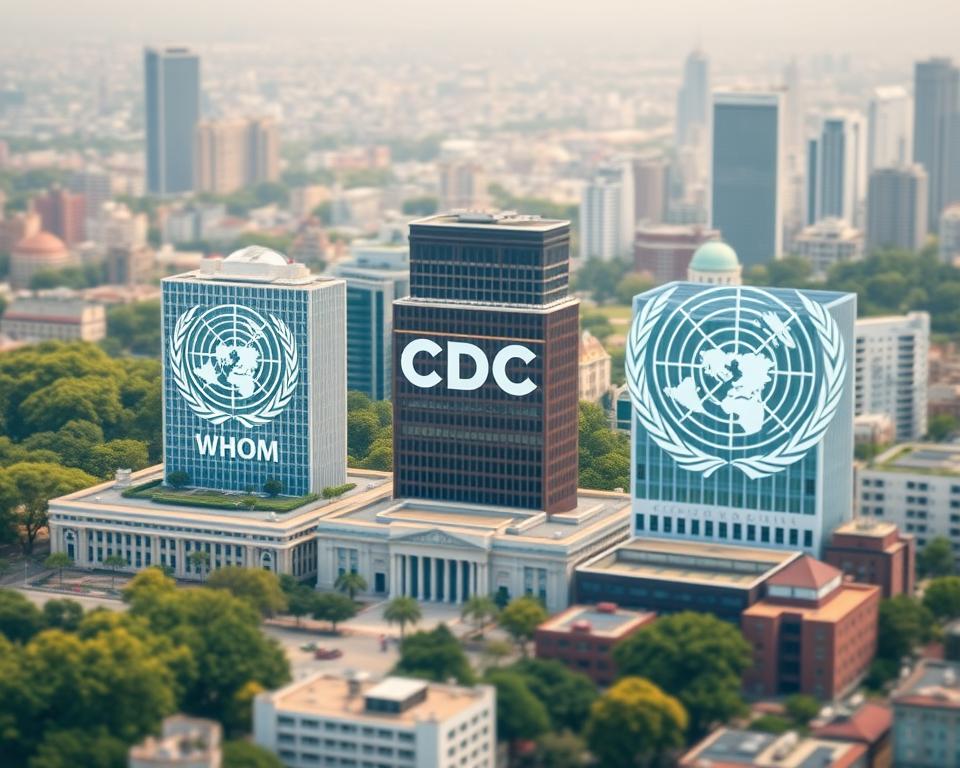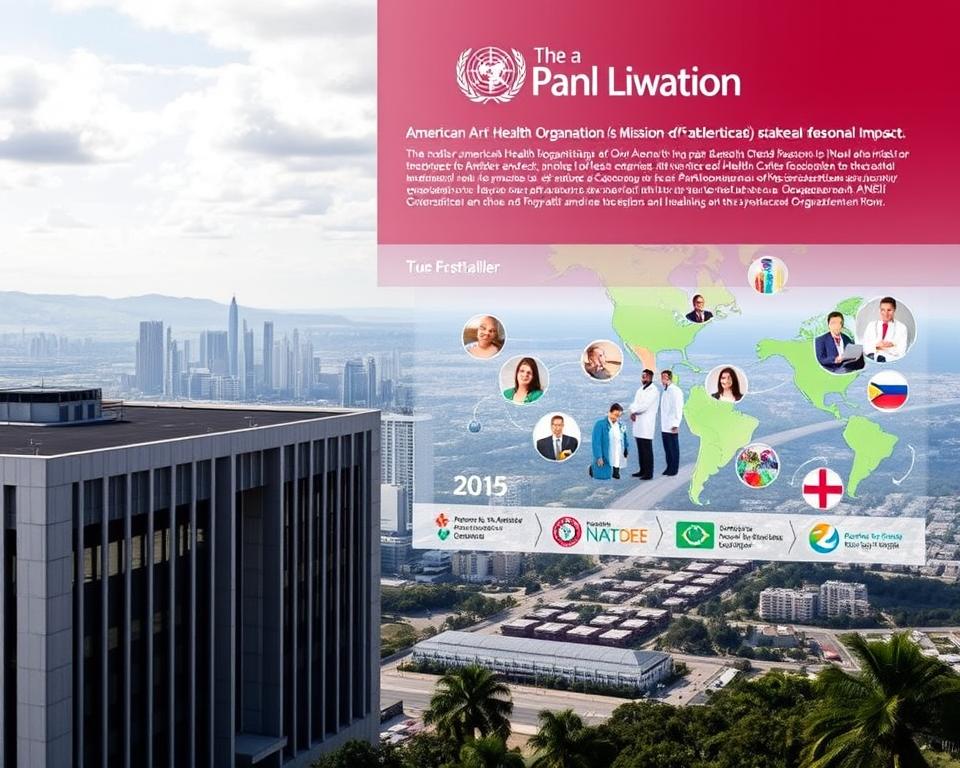
Become an EMT: American Health Education
Did you know that approximately 250,000 people are saved each year in the United States thanks to the rapid response of Emergency Medical Technicians (EMTs)? This remarkable statistic highlights the crucial role these professionals play in emergency medical services. If you’ve ever felt a calling to help others in their most vulnerable moments, the American Health Education EMT training program could be your gateway to a fulfilling career.
In this guide, we’ll explore the pathway to becoming an Emergency Medical Technician through a comprehensive training program. From understanding the core responsibilities of EMTs to the essential certifications and skills needed, you’ll find the information you need to launch your career in this rewarding field. Join us as we delve deeper into the world of EMTs and discover how you can make a difference.

Key Takeaways
- The impact of EMTs is profound, saving countless lives across the country.
- A comprehensive understanding of the EMT training program is essential for aspiring students.
- EMTs provide critical emergency services that support healthcare systems.
- Training includes practical skills that are vital for handling emergency situations.
- Certifications play a key role in establishing credibility and expertise in this field.
- Flexibility in training options, including online classes, is available for aspiring EMTs.
Introduction to the EMT Profession
The EMT profession plays a vital role within emergency medical services, providing essential medical care in urgent situations. EMTs frequently serve as the first line of defense when emergencies arise, working in close collaboration with fire departments and law enforcement to manage critical medical scenarios effectively. Their expertise allows them to assess patients quickly, administer first aid, and stabilize individuals before transporting them to medical facilities.
Through rigorous training, EMTs develop a diverse skill set that enables them to respond effectively to life-threatening events. They are capable of handling a wide range of emergencies, from cardiac arrests to trauma cases, ensuring that patients receive timely interventions. The significance of the role of EMTs extends beyond immediate care; their actions can significantly impact patient outcomes and contribute to community health overall.
EMTs must remain calm and composed under pressure, demonstrating strong communication skills and teamwork abilities. These professionals are indispensable in our healthcare system, linking the initial emergency response to further treatment by medical personnel. Understanding the EMT profession is essential for appreciating the comprehensive nature of emergency medical services.
What is an Emergency Medical Technician (EMT)?
An Emergency Medical Technician (EMT) plays a vital role in the healthcare system. According to the definition of EMT, these professionals are the first responders in medical emergencies, offering immediate assistance and support to those in need. The EMT job description encompasses various responsibilities that are crucial for effective emergency response.
EMTs are trained to assess patients in critical situations, provide basic life support, and transport individuals to medical facilities. The scenarios they face can range from traumatic injuries to medical emergencies such as heart attacks or strokes. This breadth of duties highlights the need for thorough training and preparedness in their role.
As part of their essential toolkit, EMTs utilize various equipment including defibrillators, oxygen supplies, and splinting materials. Their ability to remain calm and focused under pressure is essential, as they often encounter high-stress situations that demand quick decision-making and efficient care.
This combination of skills and responsibilities underscores the importance of understanding the EMT job description, not only for those aspiring to enter the field but also for the general public to recognize the invaluable service provided by emergency medical technicians.

Importance of EMTs in Healthcare
Emergency Medical Technicians (EMTs) serve a critical role in the healthcare ecosystem, providing life-saving interventions during emergencies. Their impact on patient outcomes cannot be overstated. By delivering immediate medical care, EMTs bridge the gap between the initial response and subsequent treatment. This rapid response can be a determining factor in the health and well-being of patients.
Within the framework of healthcare emergency response, EMTs collaborate closely with other medical professionals. They gather vital information about patients’ conditions and relay it to hospital staff, ensuring a seamless transition to advanced care. Such teamwork enhances the overall efficacy of emergency services.
Engaging in community health initiatives, EMTs extend their impact beyond emergency calls. They participate in public education campaigns regarding first aid and safety protocols, fostering a well-informed community. Through their training and expertise, EMTs elevate public safety standards, preparing citizens to respond effectively in emergencies.
The multifaceted role of EMTs in healthcare underscores their significance in maintaining public health and safety, making them invaluable contributors to the healthcare system.
American Health Education EMT Training Program
The american health education emt training program provides a robust foundation for those venturing into the world of emergency medical services. This program is designed with a comprehensive EMT curriculum that emphasizes the critical knowledge and skills required to excel in this demanding field.
The curriculum encompasses a variety of essential topics, including anatomy and physiology, emergency response techniques, and patient assessment. Participants engage in rigorous skills training aimed at developing their ability to perform under pressure. This includes hands-on experience in life-saving interventions, ensuring that aspiring EMTs are well-prepared for real-life situations.
Throughout their training, students learn to apply critical thinking skills, facilitating effective decision-making during emergencies. Effective communication is another cornerstone of the program, as it is crucial for coordinating with healthcare teams and providing optimal patient care. By the end of the program, graduates emerge as confident and competent EMTs, ready to face the challenges of emergency medical services.
What to Expect in EMT Training
Individuals entering EMT training programs can anticipate a comprehensive educational journey that blends both theoretical and practical components. EMT training expectations are geared towards equipping students with essential knowledge and skills necessary for emergency medical response. Classroom sessions often cover vital topics such as anatomy, patient assessment, and emergency protocols. These lessons form the foundation of a well-rounded EMT education.
Hands-on EMT training plays a crucial role in reinforcing what is learned in lectures. Through simulations and realistic scenarios, students develop the ability to think quickly and act effectively in high-pressure situations. Real-life experience with equipment, patient interaction, and teamwork prepares beginners for the demands of working on ambulances.
The typical EMT training duration varies, ranging from several months to a year, influenced by the level of certification pursued. Basic EMT programs might last around six months, while advanced courses can extend closer to a year. This timeframe allows students to gain in-depth knowledge and practical experience, ensuring they are fully prepared to enter the field upon graduation.
| Certification Level | Typical Duration | Key Focus Areas |
|---|---|---|
| Basic EMT | 6 months | Patient Assessment, Vital Signs, Basic Life Support |
| Advanced EMT | 1 year | Advanced Airway Management, Medication Administration |
| Paramedic | 1-2 years | Advanced Patient Care, Cardiac Management, Critical Care Transport |
This combination of theory and hands-on practice makes the EMT training experience engaging and effective, ultimately fostering highly capable emergency medical technicians ready to meet the challenges of the job.
Online EMT Classes: Flexibility for Aspiring EMTs
For individuals considering a career as an Emergency Medical Technician, online EMT classes offer a flexible and effective learning option. These programs cater to busy schedules, allowing students to learn at their own pace while managing their personal and professional commitments.
The advantages of online learning are especially appealing. Students can access course materials at any time, which permits a better balance between studies and personal life. This setup significantly minimizes travel time, allowing for more study hours without the need to commute to a classroom.
Many reputable institutions provide high-quality online EMT courses designed to meet the same rigorous standards as traditional training programs. These courses often include interactive modules, multimedia resources, and virtual simulations that foster a comprehensive understanding of emergency medical practices.
When searching for the best online EMT courses, prospective students should consider factors such as accredited programs, experienced instructors, and comprehensive support services. This ensures that the education received is both thorough and respected within the medical community.
Essential Certifications for EMTs
To excel in their roles, Emergency Medical Technicians must obtain essential certifications for EMTs that validate their skills and knowledge. Certifications not only enhance the professionalism of EMTs but also ensure that they can respond effectively in emergency situations.
The first and foremost requirement is CPR certification, a critical qualification that empowers EMTs to perform lifesaving cardiac techniques. Through this certification, they learn the necessary skills to manage cardiac emergencies effectively, which can make a significant difference in patient outcomes.
In addition to CPR, first aid training is indispensable for EMTs. This training equips them with the knowledge needed to treat injuries, manage trauma, and stabilize patients before they reach a medical facility. Understanding basic first aid principles can foster a quicker and more effective response in emergency scenarios.
EMTs should also be aware of some key aspects concerning their certifications:
| Certification | Duration | Recertification Requirement |
|---|---|---|
| CPR Certification | 2 years | Complete a refresher course |
| First Aid Training | 2 years | Recertification course or refresher |
| EMT Basic Certification | 3 years | Continuing education credits |
Maintaining competency through continuous education is essential for all EMTs. Regular recertification allows them to stay updated on new practices and medical protocols, ensuring the highest standards of care for their patients.
Emergency Response Training: A Crucial Component
Emergency response training forms the backbone of an EMT’s skill set, equipping them with the essential tools to handle various medical crises. From understanding the nuances of EMT emergency responses to executing precise triage protocols, this training is indispensable for effective intervention.
Key components of emergency response training cover a range of critical areas:
- Triage Principles: Identifying and prioritizing patients based on the severity of their conditions.
- Scene Safety Assessments: Ensuring the safety of both the responders and the patients in potentially dangerous environments.
- Teamwork Dynamics: Collaborating efficiently with other healthcare professionals to provide comprehensive care.
By engaging in this rigorous training, EMTs enhance their ability to make quick, life-saving decisions under pressure. The investment in critical training for EMTs not only benefits the individuals involved but also leads to better outcomes for communities they serve.
Preparing for Your EMT Career after Training
After completing their EMT training, individuals gain access to a wealth of job opportunities for EMTs across various environments. Whether in bustling urban areas or quiet rural communities, the demand for skilled EMTs continues to grow. Graduates can pursue positions with ambulance services, hospitals, fire departments, and private healthcare firms, allowing them to find a niche that aligns with their interests and goals.
EMT career preparation goes beyond just acquiring technical skills. Engaging in ongoing education for EMTs is crucial for personal and professional development. This continuous learning enables EMTs to stay updated on best practices, emerging technologies, and evolving protocols in emergency medical care. Advanced certifications in specializations such as paramedicine or emergency management can provide greater career advancement opportunities.
As graduates embark on their EMT career journey, networking within the healthcare community can open doors to various opportunities. Attending industry conferences or local EMS organization meetings can help build valuable connections. Understanding the importance of ongoing education will empower these professionals to enhance their skills, adapt to new challenges, and thrive in their roles.
| Job Opportunities | Work Environments | Potential for Advancement |
|---|---|---|
| Ambulance Services | Urban Settings | Paramedic |
| Hospitals | Rural Settings | Emergency Management |
| Fire Departments | Private Healthcare | Specialized Training Opportunities |
Importance of Medical Emergency Preparedness
Medical emergency preparedness plays a vital role in safeguarding individuals and communities. Being ready for unexpected situations not only enhances personal safety but strengthens community resilience. EMTs are instrumental in promoting emergency readiness, equipping people with the knowledge and skills necessary to respond effectively during a crisis.
Understanding the importance of preparedness can significantly impact outcomes in emergencies. In the fast-paced world of emergency medical services, proper training and planning enable individuals to act swiftly, remaining calm under pressure. This readiness instills confidence that can make a difference between life and death.
Emergency plans should be comprehensive yet adaptable, allowing for various scenarios. Training sessions organized by EMTs often emphasize the significance of creating these plans, covering aspects such as communication strategies, evacuation routes, and first-aid techniques. By fostering this understanding, communities can better prepare themselves and reduce the chaos during real emergencies.
Moreover, collaboration with local organizations, schools, and businesses further amplifies the importance of preparedness. Schools hosting emergency drills or local businesses investing in preparedness training demonstrate a commitment to the safety of their communities. These initiatives ultimately lead to improved emergency response and a culture of safety that benefits everyone involved.
| Key Elements of Medical Emergency Preparedness | Description |
|---|---|
| Training Programs | Workshops and courses that teach first aid, CPR, and emergency response skills. |
| Emergency Plans | Detailed strategies for communication, evacuation, and response during crises. |
| Community Drills | Simulated emergency scenarios that help residents practice their response. |
| Resource Availability | Access to emergency supplies like first-aid kits, food, and water. |
In summary, promoting medical emergency preparedness benefits everyone. The proactive role of EMTs in training and community engagement is crucial in fostering a culture of readiness and resilience. By emphasizing the importance of preparedness, communities can create safe environments, empowering individuals to respond effectively to emergencies.
Life Skills Developed through EMT Training
The journey through American Health Education EMT training is transformative, imparting valuable life skills that extend beyond medical knowledge. One of the key areas of development is in communication in healthcare. EMTs learn to interact effectively with patients, families, and colleagues, ensuring clear and compassionate exchanges during high-stress situations.
Alongside communication, critical thinking for EMTs is emphasized as a critical component of the training program. EMTs must assess patient conditions swiftly, make informed decisions, and prioritize actions based on urgent needs. This ability to think critically not only enhances their effectiveness as medical responders but also prepares them for challenges that may arise in various scenarios.
Through immersive training experiences, individuals gain skills that are applicable in both professional and personal contexts. The life skills from EMT training cultivate resilience, teamwork, and adaptability, ultimately shaping individuals into more confident and capable individuals.
Success Stories: EMTs Making a Difference
The American Health Education EMT play a pivotal role in communities, often becoming the unsung heroes during emergencies. Numerous EMT success stories showcase their profound dedication and skill, illustrating the impact of EMTs on public health. These professionals respond to crises, providing life-saving medical care and support.
For instance, during a recent natural disaster, a team of EMTs worked tirelessly to rescue individuals trapped in flooded areas. Their swift actions not only saved lives but also restored hope to families in distress. This story epitomizes the EMT contributions to health, highlighting their essential presence during critical situations.
Another compelling example involves an EMT who initiated a health awareness campaign after witnessing a rise in cardiac emergencies in her community. By educating citizens on heart health and CPR techniques, she significantly reduced emergency response times for cardiac incidents. Such initiative reflects the significant impact of EMTs beyond immediate medical interventions.
These accounts and many others demonstrate how the dedication of EMTs profoundly affects their communities. Their commitment to service fosters trust in emergency services and inspires future generations of health professionals. As more people become aware of EMT success stories, interest in pursuing this noble career path grows, ensuring that dedicated individuals continue to make a difference in the world of healthcare.
Conclusion
In summary, the journey to becoming an EMT is both challenging and rewarding. With a variety of educational pathways available through reputable programs like American Health Education, individuals can equip themselves with the knowledge and skills necessary for a gratifying career in emergency medical services. Our exploration of EMT training has highlighted the significance of comprehensive education and hands-on experience in preparing candidates for the complexities they will face in the field.
Throughout this article, we’ve discussed the pivotal role EMTs play in healthcare, their responsibilities, the essential certifications required, and the invaluable life skills developed during training. All these elements combine to create a foundation for a successful career in emergency medical services. As you reflect on this summary of EMT training, consider the profound impact you could make by joining this essential profession.
For those interested in making a difference and embracing a fulfilling career, the EMT path promises adventure, development, and the opportunity to save lives. Take the first step today, and embark on a journey that not only enhances your own life but also profoundly affects the lives of others.







